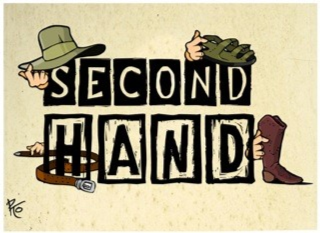News
Tax Talk Newsletter Dec 15 / Jan 16

Tax on Christmas parties and presents
- It’s coming up to that time of year when you might be planning a staff Christmas party. It's great for morale and a chance to mark the end of the year. But what are the tax considerations?
You may be able to claim as business expenses events such as Christmas functions or giving gifts to employees.
However, you may not be able to claim all of the costs, and they may also be subject to fringe benefit tax (FBT). FBT is a tax paid on benefits that workers receive as a result of their employment.
You may be able to claim 50% of your party expenses in your GST and income tax returns if the expenses are related to your business. But there’s also a significant private element.
Party expenses you can claim 50% of can include:
- venue hire
- food and drink
- entertainment
You can generally claim 100% of the cost of gifts, such as food baskets or event tickets, as a business expense. But you may need to pay FBT on such gifts.
If you provide other types of goodies, like accommodation in a holiday home, use of a corporate yacht or lunch at a restaurant, then these come under entertainment expenses – and are 50% deductible as long as they’re business expenses.
Business entertainment rules are outlined in the Inland Revenue’s Entertainment expenses guide (IR268).
If you give your employees some sort of entertainment – like a voucher to use at any time – you may need to pay FBT.
There are detailed rules about FBT, including for entertainment expenses. There are some thresholds, so you may not always have to pay FBT if you only provide minimal fringe benefits. Check Inland Revenue’s Fringe benefit guide (IR409) to be sure.
If you provide Christmas food and drinks at a local venue, the cost is not subject to FBT – because employees can’t choose when and where to enjoy the benefit. However, the rules for entertainment expenses will apply. Inland Revenue’s Entertainment expenses guide (IR268) will help.
If you give employees vouchers for meals, entertainment or gifts and the employee can choose when or where to enjoy the benefit – and you’re not giving the benefit as a necessary part of their work duties – then these are subject to FBT.
Charity at Christmas
Are you thinking about some Christmas charity? You can deduct 100% of the cost of entertainment you give to the general public for charitable purposes. For example, if your company donates food for a Christmas party at a children’s hospital, that expense is 100% deductible.
And if you or an employee plans to use a business vehicle for a private trip over the festive period, check to see if you have to pay FBT on this benefit.
.
 Purchased second-hand goods for your business?
Purchased second-hand goods for your business?
In some situations you may have purchased second-hand goods to use in your business but didn't pay GST on the purchase because the seller wasn't GST registered. The good news is you can still claim a GST credit as long as the goods were located in New Zealand at the time of purchase and the details of your purchase have been recorded.
You may consider buying second-hand items for your business to save money. Even if the seller isn't GST registered you can still make a claim for GST.
Regardless of which accounting basis you use, you must make a payment for the goods before you can claim a GST credit for the purchase.
Example
Alice purchased a second-hand sewing machine for her dressmaking business. She bought the sewing machine for $160 at a garage sale. To calculate the GST amount to claim as a credit she would use the following formula:
purchase price x 3 divided by 23 = GST credit that can be claimed
$160 x 3 divided by 23 = $20.86
Alice can claim this amount on her GST return.
Second-hand goods are commonly defined as goods previously used and paid for by someone else. In the context of GST, second-hand goods don't include:
- new goods
- primary produce - unless previously used
- goods supplied under a lease or rental agreement
- livestock
- fine metal, or goods manufactured from fine metal of any degree of purity
Second-hand goods purchased from an associated person
When purchasing second-hand goods from associated people, the GST credit you can claim is treated differently.
Associated people are:
- companies controlled by the same persons
- companies and persons with a 25% or greater interest in the company
- partnerships and partners in the partnership
- relatives by blood, marriage or adoption, to the second degree (including people in a de-facto relationship)
- trustees of a trust and persons who have benefited or are eligible to benefit under the trust
- settlors of a trust and persons who have benefited or are eligible to benefit under the trust
- trustees and the settlor of a trust, except where the trustee is a charitable or non-profit body
- trustees of two trusts that have a common settlor
- two persons who are each associated with a third person.
If you purchase second-hand goods from an associated person who is not GST registered, the GST claim is based on the lowest of:
- purchase price
- current market value, or
- GST component (if any) of the original cost of the goods to the supplier.
Example
Alex bought a skill saw from his brother Nathan to use in his building business. The current market value of the skill saw is $350, but Nathan sold it to Alex for $250. Nathan is not GST registered and doesn't give Alex an invoice. Alex can claim GST on the purchase price ($250) as he paid less than the current market value ($350). Alex can claim $32.60 ($250 x 3 divided by 23) as a GST credit on his return.
Record keeping
When purchasing second-hand goods you may not always receive a tax invoice. In this case you must record the following:
- name and address of the supplier
- date of the purchase
- description of the goods
- quantity of goods
- price paid.
Specialise for success
Being a specialist gives you an edge. You'll be offering things few other people do.
You don’t have to be a doctor to become a specialist. A cleaning contractor could specialise in getting rid of asbestos. A painter could specialises in textured coatings.
If you want to break out of the rat race, look for a specialty and make sure there's a demand. Look especially for something others don't want to do. Generally, the harder, nastier or more dangerous a job is, the fewer people will do it.
If you're an expert, the job might not be hard for you, and you can charge a premium for your expertise.
Look for specialisation in your industry and up will go your income. You might need to study to become specialised, but it’s usually worth it.
 Pointers for quoting
Pointers for quoting
There are five basic mistakes you can make when putting in your price for work or products.
Some of the material for this article was found in business.co.nz. A couple of additional ideas have been added.
Spend your time quoting for only those jobs you have a reasonable chance of getting. Many clients of ours look at every job & then don’t bother putting in a price for many of them. Why waste time going there, if you’re not going to price the job?
Read the brief carefully. Do exactly what you’re asked, otherwise don’t quote.
Study your buyer. Their website is a good start. If you don’t know them, they may be desperate to get your quote because they can’t pay their bills. Check their credit rating.
Sell your firm's attributes. What can you do which is so special your firm should be chosen? Don’t forget to send in references from customers who were delighted with your work. Blow your own trumpet. If you’re great at what you do, tell them, but be specific. Generalised statements are useless.
Double-check your figures. Then proof read your quote. Is it clear & obvious what you are quoting for? You don’t want an argument later. Make sure your terms & conditions are included. Every time you strike an argument with a customer, go back & rewrite your terms so that particular problem can't arise again. You should probably read through the quote three or four times before letting it go.
You’ll find more hints for successful tendering on the Ministry of Business, Innovation & Employment’s Procurement website. It includes videos of buyers talking about what they look for in tenders.
Email alerts from IRD
From time to time IRD send email alerts to customers telling them they have documents to view in their myIR account. Some of you have told IRD that you're concerned about these email alerts. You've asked IRD how customers can tell if the email is legitimate, could there be a privacy breach and could it be sent to the wrong address?
The following features confirm that this email is legitimately from Inland Revenue:
The sender is alerts@IRonline.ird.govt.nz
There is a unique identifier at the bottom of the email below the footer that starts with AID and contains a maximum of 16 characters both alphabetical and numerical.
IRD’s disclaimer is specific and doesn't have any links.
You asked IRD if sending IRD numbers in the alert email is a privacy breach. Privacy is maintained in these emails. A breach only occurs when a customer's information is received by someone it doesn't belong to.
The email address the alert email is sent to has been provided by the customer. This makes it unlikely IRD would send a customer's information to another customer's email address. If the customer doesn't keep their contact details up to date with IRD the most likely scenario is that the email alert IRD sends will bounce back to IRD.
There is a further safeguard. When customers contact IRD, they must provide three points of validation, not including their IRD number, so their information remains confidential.
Important: This is not advice. Clients should not act solely on the basis of the material contained in the Tax Talk Newsletter. Items herein are general comments only and do not constitute nor convey advice per se. Changes in legislation may occur quickly. We therefore recommend that our formal advice be sought before acting in any of the areas. The Tax Talk Newsletter is issued as a helpful guide to our clients and for their private information. Therefore it should be regarded as confidential and should not be made available to any person without our prior approval.




